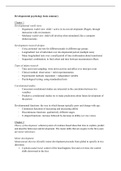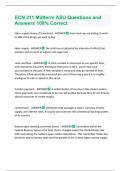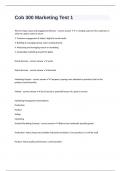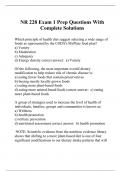Resumen
Book and Article Summary UvA Developmental Psychology
- Grado
- Institución
- Book
This is a complete summary of all mandatory materials for the UvA course developmental psychology. The summary contains content from the book, as well as the articles. I made and used this summary myself and scored an 8.1.
[Mostrar más]







